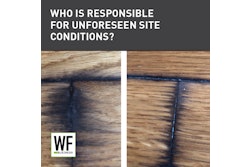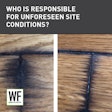
Are you certified to work on residential property containing lead paint? Are your subs? If not, any work you perform on such properties built before 1978 could subject you to five-digit fines. Under EPA regulations, contractors that could disturb lead-based coatings in “child-occupied facilities” built before 1978 must be certified and follow specific work practices. “Child-occupied facility’’ means: “A building, or portion of a building, constructed prior to 1978, visited regularly by the same child, under 6 years of age, on at least two different days within any week provided that each day’s visit lasts at least three hours and the combined weekly visits last at least six hours, and the combined annual visits last at least 60 hours.”
The EPA aggressively enforces this:
- A Kansas contractor working on a vacant apartment building built in 1922 incurred $27,000 in penalties and costs. The EPA said it was a “child-occupied facility” because children had regularly visited there in the past and would do so in the future.
- A contractor in Alaska worked on the governor’s house and was fined $32,130 because the company was not EPA-certified and hired uncertified subcontractors.
Common sense should not be relied on to determine if lead paint rules apply. I once represented a contractor installing new wood floors in a house built in 1968. The contractor ripped up carpeting installed in 2003 and threw it in the dumpster, only to be tagged by a building inspector for failing to properly dispose of it. The contractor argued the carpet was from 2003, but the inspector said lead paint flakes could have contaminated carpeting sitting in a 1968 house. Luckily, the building inspector flagged the issue but not the EPA.
All flooring contractors working on “child-occupied buildings” built before 1978 should:
- Attend an EPA lead renovation class.
- Apply for certification.
- Provide customers with the “Renovate Right” pamphlet.
- Obtain a receipt showing the customer received the pamphlet.
- Test flooring finishes, baseboards and shoe moldings for lead paint.
- If lead is present, before starting work, tell the customer about the lead paint, the required procedures and the related costs. If you encounter lead, you are not required to abate it—you can tell customers they need to hire someone else to do that.
- Ask your insurance agent if you need additional insurance to cover lead paint work.
Virtually all relevant information about lead paint certification and abatement can be found on the EPA’s website at www.epa.gov.

































